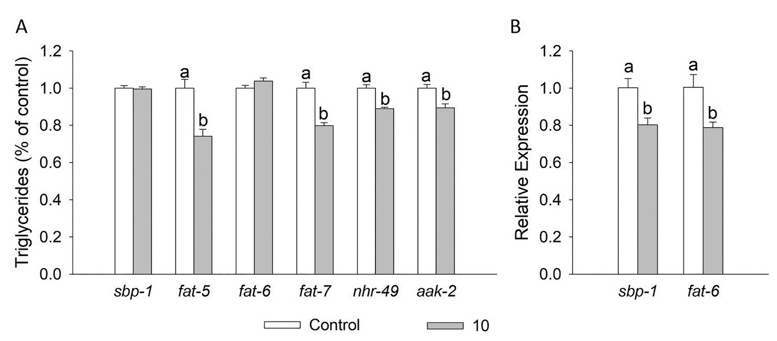Curcumin reduced fat accumulation in C. elegans
2021-12-31 17:32
Now there is an argument that the 21st century is the era of obesity and diabetes. Such a claim didn’t come without the support of data. Take the U.S. as an example, the obesity rate has rocketed from 15% in 1970 to a staggering 42.4% in 2018, despite all the technological and mediacal advances. So, the recent years have seen the food industry work hand in hand with academics to explore more potent solutions against the obesity known as the “plague of the century”. In past studies, curcumin, a diarylheptanoid present in Curcuma longa plants, has shown positive effects in the fight against obesity. Prompted by the looming prevalence of obesity in modern society, Yiren Yue and his team from the University of Massachusetts, US, and Gengxin Hao from Jimei University, China, published a related paper in Current Research in Food Science. In the paper, C. elegans is used as the model organism to study two genes related to lipogenesis-associated, sbp-1 and fat-6, to push further the boundary of research on the topic of how curcumin prevents obesity.
Reduced fat accumulation and body size, increased locomotive activity of C. elegans
The researchers found that, curcumin at concentrations ≥10μM significantly reduced fat accumulation and body size of C. elegans (Figure 1A-B). And this change was not caused by affecting their feeding behavior. An enhanced locomotive activity(average moving speed) has been seen among the treated worms and it’s suggestive of an increased energy expenditure, which might also contribute to the above mentioned change in body composition and appearance(Figure 1C).

Figure 1. Effect of curcumin on normal physiological parameters in C. elegans
Curcumin reduced fat accumulation via sbp-1 and fat-6
It has been suggested that stearoyl-CoA desaturase (SCDs) are potential drug targets for obesity treatment as deficiency in SCDs has resulted in overall fat reduction in both mammals and C. elegans. SCDs are enzymes that play an important role in lipogenesis, responsible for catalyzing the rate-limiting step of the reaction during which saturated fatty acids got turned into monounsaturated fatty acids. Real-time PCR and gene knock-out mutant strains were employed to identity the role of curcumin in lipid metabolism, the researchers were able to lock down the specific genes that played a role in curcumin’s functioning. It was found that the fat lowering effect of curcumin was successfully abolished in the sbp-1 and fat-6 (Figure 2A). Real-time PCR showed that the mRNA expression levels of sbp-1 and fat-6 were significantly down-regulated by curcumin treatment (Figure 2B). These results suggest that curcumin inhibits sbp-1 and fat-6 to reduce fat accumulation in C. elegans.

Figure 2. Effect of curcumin on lipid metabolism in C. elegans
Curcumin altered locomotive activity via sbp-1
Since it was found in the experiments with the wild-type strain that curcumin could enhance locomotive performance in C. elegans, the researchers also investigated the mechanism underneath. In addition to the sbp-1 and fat-6 mutants previously studied, akk-2 mutant (the akk-2 gene mediated AMPK pathway is positively related to locomotive activity in C. elegans) was also used in the experiment. Curcumin treatment significantly increased the average moving speed in the fat-6 and aak-2 mutants (Figure 3B-C). While the trial with the sbp-1 defective strain showed a different result, that curcumin’s effect waned on this strain of worms(Figure 3A). We can then logically deduce that the increased locomotive activity by curcumin was dependent on sbp-1.

Figure 3. Effect of curcumin on locomotive activity
These years we are seeing words like “turmeric powder” and “turmeric extract” appearing on an increasing number of labels. Just like in tea and coffee, it seems that, as researches expand and progress, we are starting to dig more out of this golden powder. Previous researches have discovered other health-promoting benefits offered by turmeric like the neuroprotective property. In the meantime, many publications, like this paper, are looking into a level deeper. Phenotypic observation is not where we stop, and with outstanding model organisms like the C. elegans whose malleable but indicative bio-characters offering us an ever more convenient tool, we are able to plough into the molecular level and unlock greater details.
Reference:
Yue, Y., Hao, G., Cho, J., & Park, Y. (2021). Curcumin reduced fat accumulation in Caenorhabditis elegans. Current Research in Food Science, 4, 551–556. https://doi.org/10.1016/j.crfs.2021.08.005





